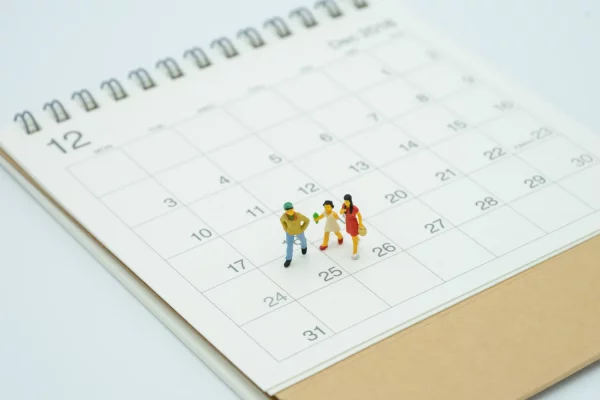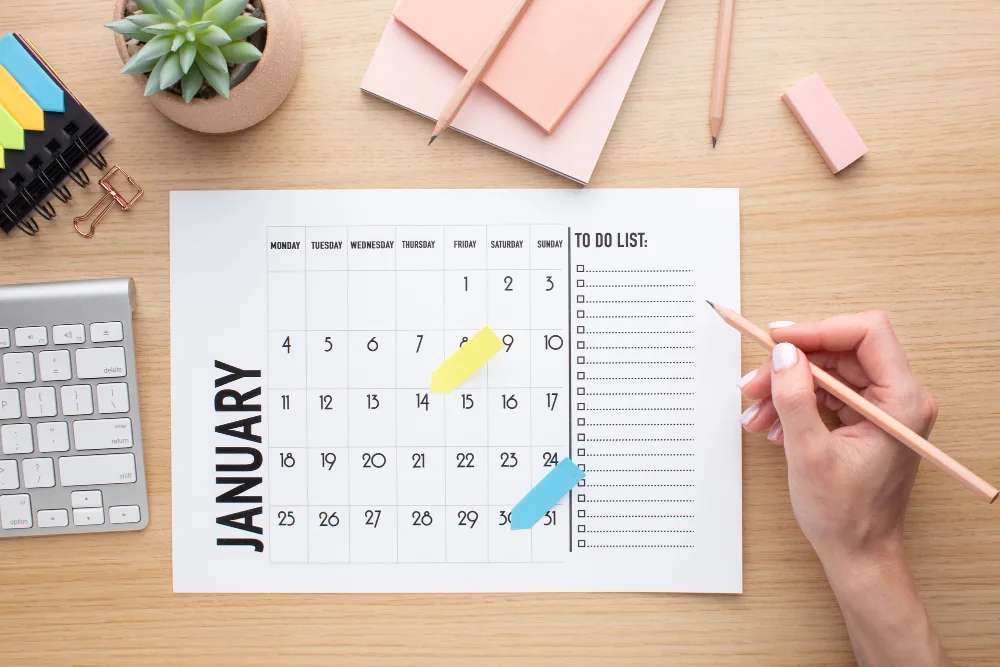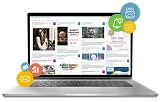
10 Steps to Building your Community Event Calendar
A community event calendar is more than a list of dates. It’s a public hub where local events come together in one easy-to-access space. From concerts and festivals to workshops and fundraisers, a well-built community calendar of events helps people discover, connect, and participate.
Behind every great community events calendar is a network of contributors — businesses, nonprofits, schools, and individuals — who keep listings fresh and relevant. In this guide, you’ll learn ten steps to build a thriving calendar that becomes your community’s go-to resource.
I. Practical Steps to Create a Community Event Calendar
If you’re wondering how to start or scale your own calendar, this section will walk you through ten practical steps to build and populate your community events calendar.

1. Create an Online Community Event Calendar
Start with a central, online hub where people can publish, discover, and share events. Scattered flyers and social posts are easy to miss, but a digital calendar puts everything in one place. It saves time, boosts visibility, and encourages participation.
Choose a platform that’s easy to manage and flexible. For example, Timely Event Calendar Software offers a user-friendly, mobile-responsive design with customization options for branding. With seamless integration into your website and other platforms, Timely makes community event management simple while creating a professional experience.
2. Use Categories, Tags, and Filters for Easy Discovery
A well-structured community calendar is only as useful as its ability to help people quickly find the events that interest them most. That is why we recommend organizing your events by categories like music, sports, family, or education. You can also add tags for themes such as “free events” or “networking.” Location filters let users browse by neighborhood or city. These features improve usability and SEO, ensuring your city events calendar ranks for local searches.
Timely’s advanced taxonomy features let you assign multiple tags, create custom filters, and design a searchable community events list that grows with your audience.
3. Import Events from Other Sources
Building a thriving community events calendar doesn’t mean starting from scratch. You can easily populate your calendar by importing events from trusted sources such, as Google Calendar, Facebook, or Eventbrite. Automated syncing ensures your public events calendar stays current while saving manual effort.
With Timely, imported events automatically match your site’s branding for a consistent look. This approach not only keeps your calendar vibrant but also strengthens partnerships with local organizations whose events you feature.

4. Organize your Community Event Submission Process
A strong calendar thrives on contributions. Make submissions easy with a prominent “Submit an Event” button and a simple form. Only ask for essentials like title, date, and location.
Modern platforms, like Timely, go further with integrated submission forms and workflows. Contributors can submit, update, or cancel events through their own profile, while you maintain approval control. This balance keeps your community event calendar accurate and manageable.
5. Build Your Own Community Events Network
A community events network is more than just names on a page. It’s a partnership of local groups working together to enrich community life. This network often includes:
- Local businesses hosting or sponsoring events.
- Venues, service providers, and entertainment partners.
- Schools, colleges, and training centers.
- Nonprofits and charities raising awareness or funds.
- Government and civic organizations promoting cultural or public initiatives.
- Community leaders and influencers who spread the word.
When these groups contribute consistently, your local events calendar stays dynamic and inclusive. It reflects the vibrancy of your community while making it easier for residents and visitors to engage
If you don’t have a network yet, start small by inviting active groups like neighborhood associations or charities. You can also form partnerships with umbrella organizations, like chambers of commerce or cultural councils. These groups can funnel multiple events your way and often have established communication channels you can tap into.
6. Promote your Community Event Calendar on Social Media
Social media extends your reach. Share highlights of upcoming community events on Facebook, LinkedIn, Instagram, or X. Use visuals, hashtags, and tagging to boost visibility. Ask contributors to reshare your posts to reach wider audiences.
To stay consistent, develop a simple social media plan that includes a posting schedule, a list of relevant accounts to follow, and clear engagement goals. Platforms like Timely streamline this with built-in sharing tools. Events are posted automatically to your chosen networks, saving time and keeping audiences engaged.

7. Stay Connected with Email Marketing
Email marketing remains one of the most effective tools for building and maintaining community engagement since it gives you a direct line of communication with your audience. By landing directly in inboxes, your updates reach people where they are most likely to see them.
A great approach is to include an “Upcoming Events” or “Top Picks” section in your regular mailings, with links back to your calendar for full details. This not only drives traffic to your calendar but also keeps subscribers consistently engaged.
With Timely’s Mailchimp integration, events can be automatically added to branded newsletter templates, segmented for different audiences, and scheduled to send updates automatically — saving time while keeping newsletters current and relevant.
8. Keep It Accessible and Inclusive
Making your calendar accessible and multilingual ensures everyone can participate, whether they rely on assistive technologies or prefer to browse in their own language. This inclusivity is especially powerful in diverse communities, welcoming people with disabilities, immigrants, and international visitors.
With Timely’s advanced accessibility and multi-language features, inclusivity becomes seamless. The software is built to comply with WCAG accessibility standards and provides multi-language support so event organizers can publish listings in several languages. Visitors can then view events in their own language, improving both usability and engagement.
9. Foster Community Participation With Add-On Features
A community calendar can be more than just an event listing. It can serve as an interactive hub where people not only discover local happenings but also confirm their participation. Tools such as free registration, paid ticketing, waitlists, and automated reminders encourage commitment, boost attendance, and create a stronger sense of connection.
With Timely event registration and ticketing tools, these capabilities are seamlessly integrated into your calendar. You can sell tickets, manage registrations and waitlists, send reminders, and even streamline entry with QR code check-ins. Post-event notifications help maintain engagement after the event ends. Together, these features make it easier to connect with attendees while simplifying management, turning your calendar into a comprehensive community engagement platform.
10. Track Analytics and Optimize
A community calendar is more than just a listing of events — it’s also a powerful source of insights. By tracking how people interact with your calendar, you can understand what works best, refine your strategy, and continuously improve engagement.
Analytics can reveal important trends, such as:
- Which events receive the most clicks
- Which categories or tags attract the most attention
- Where your visitors come from
- How users navigate the calendar
These insights allow you to optimize your promotion strategy, feature high-demand events, and guide contributors in tailoring their submissions for better visibility.
With Timely’s reporting and analytics tools, you get a clear picture of how your calendar is performing. Detailed dashboards and reports show metrics such as page views, clicks, shares, and participation. You can filter by event, category, or date range, making it easy to spot trends over time.

II. Final Thoughts
Follow these ten steps and you’ll build an incredible community event calendar with active and accurate listings. Whether you’re launching a local events calendar for a neighborhood or scaling a city events calendar across departments, the goal is the same: make it easy for people to find upcoming community events and easy for partners to contribute.
When you’re ready to streamline your event workflow, a community calendar app like Timely brings everything together in one place. This type of community event calendar software supports end-to-end management, from event intake and promotion to participation and post-event engagement. It’s highly scalable, capable of supporting community events calendars for both small groups and large communities, all without adding extra overhead.
Make it effortless for people to discover what’s next, and let Timely help your community events calendar become the heartbeat of local life.





